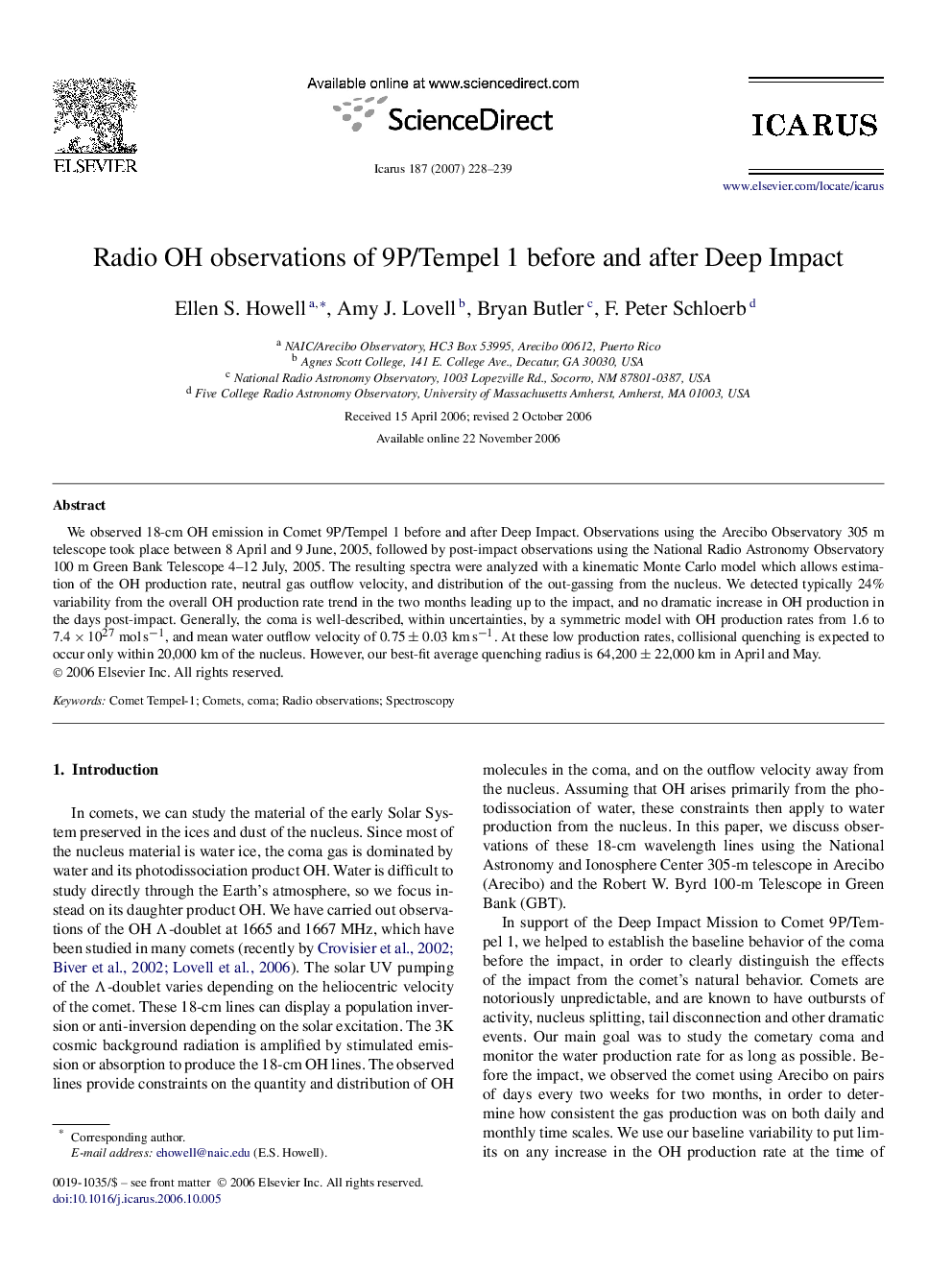| Article ID | Journal | Published Year | Pages | File Type |
|---|---|---|---|---|
| 1775723 | Icarus | 2007 | 12 Pages |
Abstract
We observed 18-cm OH emission in Comet 9P/Tempel 1 before and after Deep Impact. Observations using the Arecibo Observatory 305 m telescope took place between 8 April and 9 June, 2005, followed by post-impact observations using the National Radio Astronomy Observatory 100 m Green Bank Telescope 4-12 July, 2005. The resulting spectra were analyzed with a kinematic Monte Carlo model which allows estimation of the OH production rate, neutral gas outflow velocity, and distribution of the out-gassing from the nucleus. We detected typically 24% variability from the overall OH production rate trend in the two months leading up to the impact, and no dramatic increase in OH production in the days post-impact. Generally, the coma is well-described, within uncertainties, by a symmetric model with OH production rates from 1.6 to 7.4Ã1027molsâ1, and mean water outflow velocity of 0.75±0.03kmsâ1. At these low production rates, collisional quenching is expected to occur only within 20,000 km of the nucleus. However, our best-fit average quenching radius is 64,200 ± 22,000 km in April and May.
Related Topics
Physical Sciences and Engineering
Earth and Planetary Sciences
Space and Planetary Science
Authors
Ellen S. Howell, Amy J. Lovell, Bryan Butler, F. Peter Schloerb,
